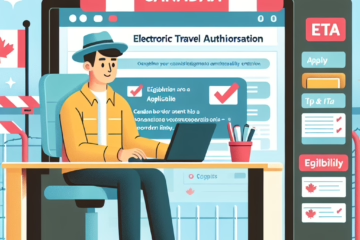Canada has long been recognized for its commitment to humanitarian efforts and its welcoming stance toward refugees. The country’s refugee intake policies are designed to provide a safe haven for those fleeing persecution, conflict, and violence. This article delves into the intricacies of Canada’s refugee admission framework, the criteria for determining refugee status, and the processes involved in integrating refugees into Canadian society. By understanding these components, we can appreciate the challenges and successes of Canada’s approach to supporting some of the world’s most vulnerable populations.
Table of contents
Overview of Canada’s Refugee Admission Framework
Canada’s refugee admission framework is a comprehensive system that aims to balance humanitarian obligations with national security and public safety. The framework is governed by several legislative and policy instruments, most notably the Immigration and Refugee Protection Act (IRPA) and the United Nations Convention Relating to the Status of Refugees. Under this framework, Canada admits refugees through two main streams: government-assisted refugees (GARs) and privately sponsored refugees (PSRs). Government-assisted refugees are selected from overseas and resettled in Canada with the support of the federal government, while privately sponsored refugees are supported by private groups or organizations within Canada.
The Canadian refugee system is designed to be responsive to global crises and adaptable to changing circumstances. The country’s commitment to resettling refugees is reflected in its annual immigration levels plan, which sets targets for the number of refugees to be admitted each year. Canada also participates in international efforts to address refugee crises, working closely with the United Nations High Commissioner for Refugees (UNHCR) and other international partners. This collaborative approach ensures that Canada remains a leader in providing protection and assistance to refugees worldwide.
Key Criteria for Refugee Status Determination
Determining refugee status in Canada involves a rigorous assessment process to ensure that individuals meet the criteria set out under international and national laws. The primary criterion for refugee status is a well-founded fear of persecution based on race, religion, nationality, membership in a particular social group, or political opinion. Applicants must demonstrate that they are unable or unwilling to seek protection from their home country due to this fear. The process is conducted by the Immigration and Refugee Board of Canada (IRB), an independent administrative tribunal responsible for making decisions on refugee claims.
In addition to the fear of persecution, claimants must also establish that they are not inadmissible to Canada on grounds such as criminality or security threats. The process involves a thorough examination of the applicant’s background, including interviews and the submission of relevant documentation. While the criteria are stringent, they are designed to ensure that those who genuinely need protection are granted asylum, while also safeguarding Canada’s national security and public safety interests.
Processes and Challenges in Refugee Integration
Refugee integration into Canadian society is a multifaceted process that involves various stakeholders, including government agencies, non-profit organizations, and community groups. Upon arrival, refugees are provided with essential services such as housing, healthcare, and language training to help them adjust to their new environment. Settlement agencies play a crucial role in facilitating access to education, employment, and social services, which are vital components of successful integration. The goal is to empower refugees to become self-sufficient and active members of Canadian society.
Despite the robust support system in place, refugees face several challenges in their integration journey. Language barriers, cultural differences, and difficulties in obtaining recognition for foreign qualifications can impede their ability to find employment and fully participate in society. Additionally, refugees may experience social isolation and discrimination, which can affect their mental health and overall well-being. Addressing these challenges requires ongoing collaboration between government, community organizations, and the private sector to create an inclusive and supportive environment for refugees.
Canada’s refugee intake policies reflect the country’s commitment to providing protection and support to those in need. While the framework and criteria for refugee admission are well-defined, the integration of refugees presents both opportunities and challenges. By continuously refining its policies and fostering community partnerships, Canada can enhance its ability to welcome and support refugees, ensuring that they have the opportunity to rebuild their lives in a safe and inclusive society. As global refugee crises continue to evolve, Canada’s approach serves as a model for balancing humanitarian responsibilities with national interests.
If you have questions regarding refugee intake processes consult with a professional.
Frequently Asked Questions on Canada’s Refugee Policies
1. What is Canada’s approach to refugee intake?
Canada follows a structured framework balancing humanitarian obligations with national security.
2. How does Canada determine refugee status?
Canada assesses refugee status based on persecution fears and other criteria defined in international and national laws.
3. What is the Immigration and Refugee Protection Act (IRPA)?
IRPA is the legislation governing refugee policies in Canada, defining procedures for admitting and protecting refugees.
4. What are the main refugee admission streams in Canada?
Canada admits refugees through government-assisted and privately sponsored programs.
5. Who are government-assisted refugees in Canada?
They are refugees selected and supported by the Canadian government for resettlement.
6. Who are privately sponsored refugees?
Privately sponsored refugees are supported by private Canadian groups or organizations rather than the government.
7. What role does the United Nations play in Canada’s refugee policy?
Canada works with the UNHCR to coordinate efforts in addressing global refugee crises.
8. How does Canada set annual refugee targets?
The government outlines refugee targets in its annual immigration levels plan, which aims to balance humanitarian needs and capacity.
9. What are the criteria for refugee status in Canada?
Applicants must demonstrate a well-founded fear of persecution due to factors such as race, religion, or political opinion.
10. What is the Immigration and Refugee Board (IRB) of Canada?
The IRB is an independent tribunal that assesses refugee claims to determine eligibility for protection.
11. What kind of documentation is required for refugee applications?
Applicants must submit documents that support their claim, such as evidence of persecution or fear of harm in their home country.
12. What does Canada do to ensure refugees are not security threats?
Canada thoroughly screens applicants for criminality or security risks to protect national interests.
13. What support is provided to refugees upon arrival in Canada?
Refugees receive assistance with housing, healthcare, and language training to help them settle in Canada.
14. How does Canada support refugee integration?
Canada provides resources through settlement agencies for education, employment, and social services.
15. What are the main challenges refugees face in Canada?
Refugees may face language barriers, cultural differences, and challenges with credential recognition.
16. What is the role of community organizations in refugee support?
Community organizations provide essential services, helping refugees integrate into Canadian society.
17. How does Canada handle global refugee crises?
Canada adapts its policies and works with international partners to respond to urgent refugee needs.
18. What is Canada’s stance on international cooperation for refugees?
Canada actively collaborates with the UNHCR and other nations to address global refugee issues.
19. Why is the private sponsorship program important?
It allows Canadians to directly participate in refugee resettlement, broadening support for refugees.
20. How does Canada promote refugee self-sufficiency?
Canada provides training and resources to help refugees gain employment and become active citizens.
21. What role does language training play in refugee integration?
Language training is essential for refugees to access education, employment, and community services.
22. How are refugees affected by social isolation?
Social isolation can impact refugees’ mental health and well-being, complicating their integration.
23. What measures does Canada take to prevent discrimination against refugees?
Canada promotes inclusivity through anti-discrimination policies and community education programs.
24. How does Canada address mental health challenges for refugees?
Canada provides mental health resources through healthcare services and community organizations.
25. What opportunities exist for refugees to access education in Canada?
Canada offers education programs to support refugees in adapting and advancing within the society.
26. How does Canada support refugee employment?
Canada provides resources for skill-building, networking, and credential recognition to aid refugee employment.
27. How does Canada balance refugee intake with public safety?
Through careful vetting processes and legislation, Canada ensures public safety while admitting refugees.
28. How does Canada contribute to global humanitarian efforts?
Canada works internationally to support refugee resettlement and provides aid in refugee crises worldwide.



0 Comments